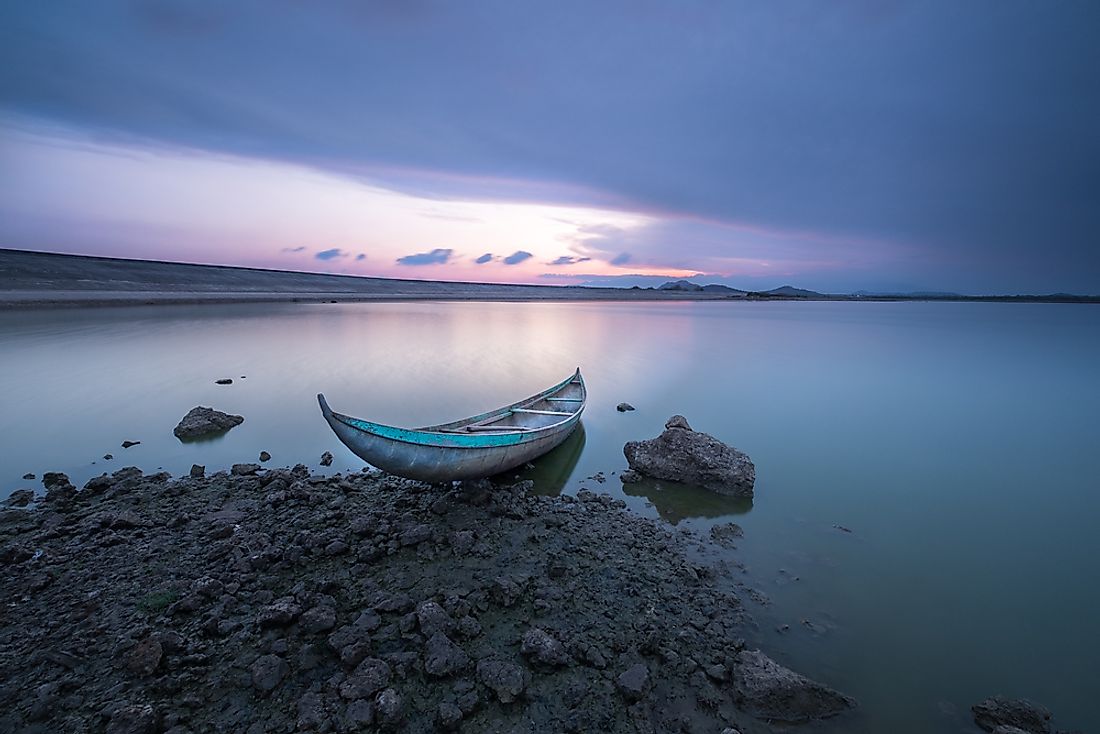What Are the African Great Lakes?

The African Great Lakes are a group of lakes located around the Great Rift Valley in the Great Lakes Region of Africa. These lakes range in size from the large water bodies like Lake Victoria (26,564 sq miles) to Lake Kivu (857 sq miles). The African Great Lakes are classified based on river basins, the presence of a draining river or its absence, and the size of the lake. The African Great Lakes region comprises of countries around the African Great Lakes and these include Kenya, Uganda, Democratic Republic of Congo, Burundi, Rwanda, and Tanzania.
Important Features Of The African Great Lakes
Climatic Conditions
The African Great Lakes region hve three major drainage basins: the Nile Basin, Congo-Zaire Basin, and Zambezi River Basin. The Nile Basin drains into the Mediterranean Sea, Congo-Zaire Basin drain into the Atlantic Ocean, and Zambezi River flow into the Indian Ocean. The climatic conditions of this region vary from the cool highland climate of the Nile Basin and Congo-Zaire Basin to grassland and savannah of Zambezi Rivers. The Lake Turkana region is arid and the temperature is generally high throughout the year. The vegetation in the Great Lake region varies widely depending on the location of the lake. The lakes in the Western Rift Valley have rainforests while those on the East African Rift have papyrus reeds and water hyacinths. The fresh water lakes have a great variety of fish (more than 1,500 cichlid fish species), mammals, and numerous crocodiles. Lake Turkana has a numerous species of birds endemic to Kenya such as flamingos.
The Geology And Economy
The origin of the lakes date back to 12 million years ago when the tectonic plates of Eastern Africa moved to the northeast of the rest of Africa. This movement created the Great Rift Valley diverted the flow of rivers into depressions which developed into lakes. Lake Victoria formed through a slightly different mechanism by the uplifting of the rifts on either side. A depression formed in the middle of the two rifts forced the rivers on either side of the depression to drain into the lake. The livelihood of people living in the Great Lake Region depends on fishing (tilapia and Nile perch in particlar) and farming.
List Of The African Great Lakes

The major African Great Lakes include Lake Victoria (26,563 sq miles), Lake Tanganyika (12,355 sq miles), Lake Malawi (11,428 sq miles), Lake Turkana (2,472 sq miles) and Lake Albert (2,046 sq miles). There are other smaller Lakes in the region which include Lake Edward (977 sqmiles), Lake Kivu (857 sq miles), Lake Mweru (1977 sq miles), and Lake Rukwa (759 sq miles).
Paleontological Discoveries In The Region
Lake Turkana has been at the centre of many paleontological discoveries. In 1972, Richard Leakey discovered a 2 million-year-old skull which was initially named Homo habilis but was later renamed Homo Rudolf enosis. In 1984, a complete skeleton of Homo erectus named Turkana boy was discovered. Recently, a 3.5 million-year-old skull was discovered and named Kenyanthropus platypus.
What Are the African Great Lakes?
| Rank | Lake Name | Size (Squared Miles) |
|---|---|---|
| 1 | Lake Victoria | 26,563 |
| 2 | Lake Tanganyika | 12,355 |
| 3 | Lake Malawi | 11,428 |
| 4 | Lake Turkana | 2,472 |
| 5 | Lake Albert | 2,046 |
| 6 | Lake Kivu | 1,977 |
| 7 | Lake Rukwa | 977 |
| 8 | Lake Mweru | 857 |
| 9 | Lake Edward | 759 |











